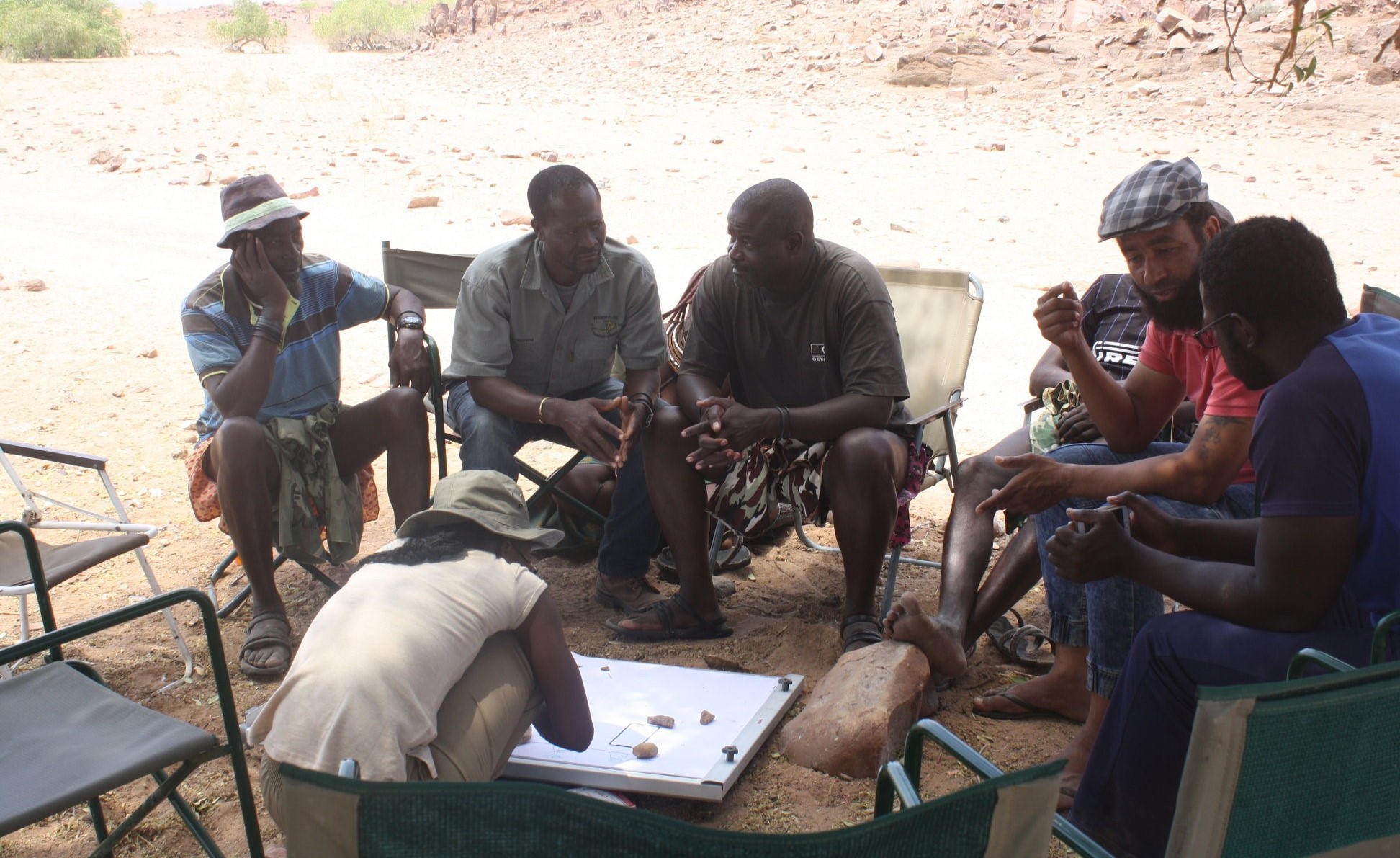Co-Creating Digital Cultural Heritage with the Ovahimba
Never in a million years would the folks from the village of Erindiroukambe in the Omaheke Region,
Eastern side of Namibia, have imagined that they would be able to use devices such as tablet computers to assist them in every day practices such as that of storytelling as a method not only of preserving indigenous knowledge, but also as a method of sharing knowledge across the barriers of understanding any one particular language.
Generally, storytelling was something which was enjoyed in the evening with the family huddled around together at the fire as they shared a few cups of tea and with the elders in the community orally doing their part in tale-telling and dispersing each day’s adventurous events.
It is for that reason so remarkable to note, that just 13 years after independence a small and less than popular community in arid Namibia are breaking new ground with regards to how people with little or no formal education at all can use technology in their remote villages.
Our team, Gereon Koch Kapuire, Colin Stanley, Shilumbe Chivuno-Kuria and Heike Winschiers-Theophilus from Namibia University of Science and Technology, together with Kasper Rodil from the Aalborg University visited our pilot community in October 2013 to see their progress; recording not only the advances made but also the limitations experienced. The community members willingly participated in our HomesteadCreator tool evaluation and Crowd Sourcing exercise. The elders at Erindiroukambe are able to make use of 3D visualisation on a tablet computer to explain to a visitor the processes involved in a traditional wedding for example. They are able to draw diagrams on the tablet in much the same way they traditionally drew in the sand to explain certain things and practices. Also, they are able to record videos of the traditional ceremonies involved, and have someone translate or give meaning to the activities that took place. One exercise was for the community members to explain the whole process of a wedding. They used cards, drawings, etc. to illustrate the process. The idea was to see if stories represented in video format only are the only way to share stories or should there be further intervention.
However, as is the case with all language and cultural differences, there are still instances where the activity or words being translated lose their original meaning; as this cannot in all instances be perfectly (word for word) translated into the other language. And these are still obstacles being experienced not necessary as a result of a gap in the technology available or use thereof, but perhaps also as a cultural/language barrier in itself.
It is therefore still very much a learning curve, theoretically speaking knowing how to physically operate the tools at their disposal in order to capture the information intended is one thing; but making sure that this captured information can be accurately imparted unto it’s intended recipients is a different matter altogether, one that we are still vigorously exploring.

